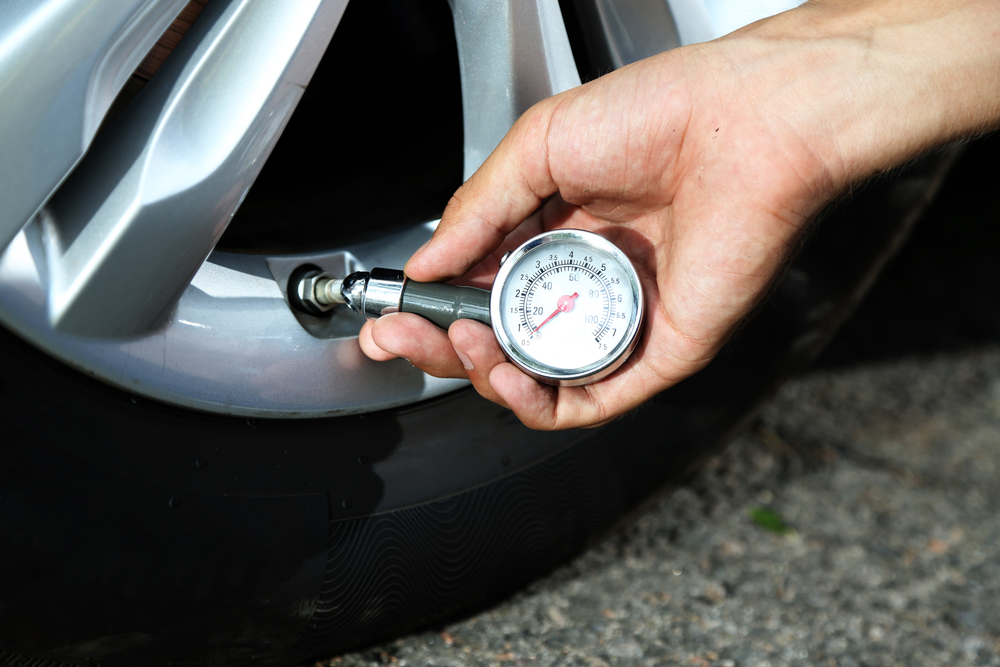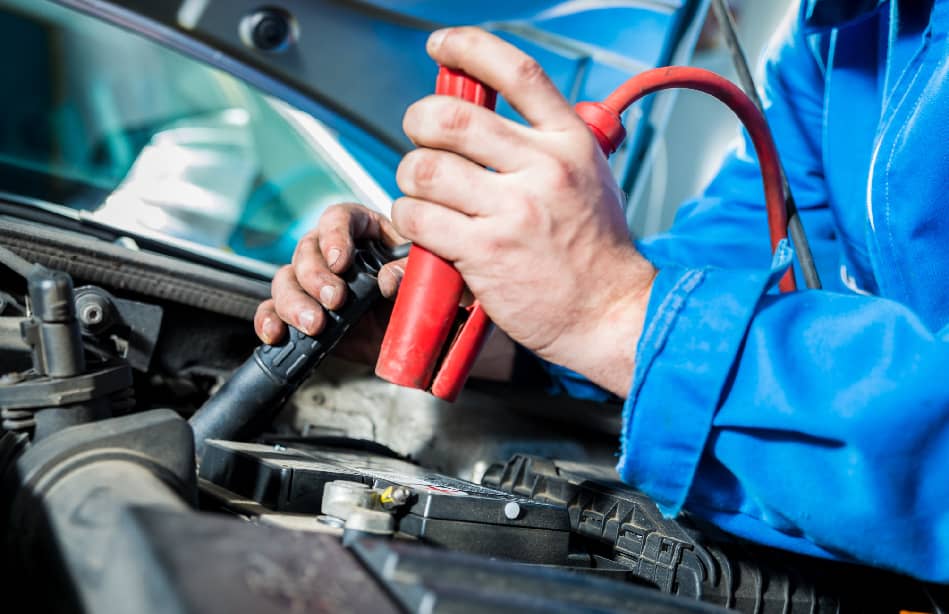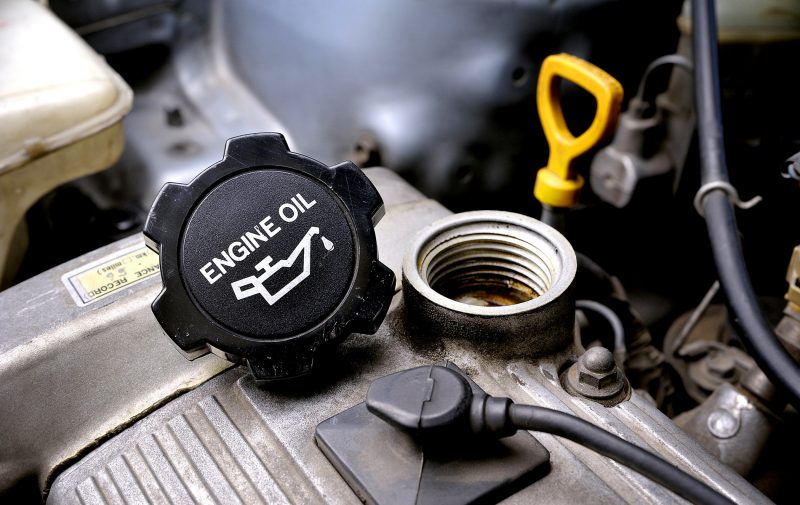Achieving 200,000 miles or more on your vehicle is a testament to good maintenance and responsible driving habits. While modern cars are built to last, reaching this milestone requires dedication and a proactive approach to car care. Keeping your car running like new involves a combination of regular maintenance, smart driving practices, and timely repairs.
By following a consistent maintenance schedule and addressing issues promptly, you can ensure that your vehicle remains reliable, efficient, and safe for years to come. This guide will outline essential tips and best practices to help you keep your car running smoothly for over 200,000 miles.
From routine oil changes and fluid checks to maintaining tire pressure and practicing gentle driving habits, each step plays a crucial role in extending the lifespan of your vehicle. Let’s see the key strategies that will help you achieve this impressive milestone.
1. Regular Oil Changes
Regular oil changes are crucial for maintaining your engine’s health and longevity. Oil lubricates the engine’s moving parts, reducing friction and wear. Over time, oil can become contaminated with dirt and debris, losing its effectiveness. To keep your engine running smoothly, it’s essential to follow your vehicle manufacturer’s recommended oil change intervals, typically every 5,000 to 7,500 miles for conventional oil and every 7,500 to 10,000 miles for synthetic oil.
Using high-quality oil and filters is equally important. Quality oil provides better lubrication, while a good filter ensures that contaminants are removed effectively. Be sure to choose the right oil viscosity for your engine, as specified in your owner’s manual.

In addition to changing the oil, it’s important to check the oil level regularly. Low oil levels can lead to engine damage, so make it a habit to inspect the dipstick and top off the oil if necessary. If you notice any unusual oil consumption or leaks, address the issue promptly to avoid potential engine problems.
Regular oil changes not only keep your engine running smoothly but also improve fuel efficiency and reduce emissions. By staying on top of your oil maintenance, you can extend the life of your engine and keep your car running like new for over 200,000 miles.
2. Maintain Proper Tire Pressure
Maintaining proper tire pressure is essential for safety, fuel efficiency, and tire longevity. Underinflated tires can cause uneven wear, reduce fuel efficiency, and increase the risk of blowouts. Overinflated tires, on the other hand, can lead to a harsh ride and decreased traction. To ensure optimal performance, check your tire pressure at least once a month and before long trips.
Refer to your vehicle’s owner’s manual or the tire placard (usually located on the driver’s side door jamb) for the recommended tire pressure. Use a reliable tire pressure gauge to measure the pressure and adjust as needed. Remember to check the pressure when the tires are cold, as heat can cause the pressure to rise.

In addition to maintaining the correct pressure, regular tire rotations are essential. Rotating your tires every 6,000 to 8,000 miles helps ensure even wear and extends the life of your tires. Alignments and balancing should also be performed as needed to maintain proper handling and prevent premature tire wear.
Inspect your tires regularly for signs of damage, such as cuts, punctures, or bulges. If you notice any issues, have them addressed by a professional immediately. Proper tire maintenance not only keeps your car running smoothly but also enhances safety and improves driving experience.
By keeping your tires in good condition and maintaining the correct pressure, you can extend their lifespan and contribute to the longevity of your vehicle, helping it reach and surpass the 200,000-mile mark.
3. Follow a Consistent Maintenance Schedule
Following a consistent maintenance schedule is key to keeping your car running like new for over 200,000 miles. Your vehicle’s owner’s manual provides a comprehensive maintenance schedule that outlines when various services should be performed. Adhering to this schedule ensures that all critical components are inspected, serviced, and replaced as needed.
Regular maintenance tasks include oil changes, tire rotations, brake inspections, and fluid checks. It’s also important to replace essential components such as air filters, fuel filters, spark plugs, and timing belts according to the manufacturer’s recommendations. Neglecting these tasks can lead to decreased performance, reduced fuel efficiency, and costly repairs down the road.
In addition to the manufacturer’s maintenance schedule, it’s a good idea to perform periodic checks on key components. For example, inspect the battery terminals for corrosion, check the condition of the belts and hoses, and ensure that the windshield wipers are in good working order. Addressing minor issues before they become major problems can save you time and money in the long run.
Keeping detailed records of all maintenance and repairs is also beneficial. These records can help you track when services were performed, identify recurring issues, and provide valuable information if you decide to sell the vehicle.
By following a consistent maintenance schedule and staying proactive about car care, you can ensure that your vehicle remains reliable and efficient, allowing you to enjoy many more miles of trouble-free driving.
4. Keep the Cooling System in Check
The cooling system plays a crucial role in maintaining your engine’s temperature and preventing overheating. Overheating can cause severe engine damage, so it’s essential to keep the cooling system in top condition. Regularly check the coolant level and top it off if necessary. Ensure that you use the correct type of coolant for your vehicle, as specified in the owner’s manual.
Inspect the radiator, hoses, and water pump for any signs of leaks or damage. Over time, hoses can become brittle and develop cracks, while the radiator can suffer from corrosion and clogging. If you notice any issues, have them repaired promptly to avoid potential overheating.

Flushing the cooling system at recommended intervals is also important. Over time, coolant can become contaminated with rust and debris, reducing its effectiveness. Flushing the system removes these contaminants and replenishes the coolant, ensuring optimal cooling performance.
Additionally, check the condition of the radiator cap, as it plays a vital role in maintaining the correct pressure within the cooling system. A faulty cap can lead to overheating and coolant loss.
By keeping the cooling system in check and addressing any issues promptly, you can prevent overheating and extend the life of your engine. Proper cooling system maintenance is essential for keeping your car running like new and achieving the 200,000-mile milestone.
5. Replace Worn-Out Parts
Replacing worn-out parts is essential for maintaining your vehicle’s performance and reliability. Over time, various components of your car will wear out and need to be replaced. Staying proactive about part replacement ensures that your vehicle continues to run smoothly and prevents minor issues from turning into major problems.
Key components to monitor and replace as needed include the brake pads, rotors, and calipers. Worn-out brake parts can compromise your vehicle’s stopping power and safety. Regularly inspecting and replacing brake components ensures optimal braking performance.
Suspension components, such as shocks and struts, also wear out over time. These parts play a crucial role in maintaining ride comfort and handling. If you notice excessive bouncing, a rough ride, or uneven tire wear, it may be time to replace the suspension components.

Belts and hoses are other critical parts that require periodic replacement. Over time, belts can become worn, cracked, or frayed, while hoses can develop leaks. Regularly inspecting and replacing these parts prevents engine overheating and mechanical failures.
Additionally, keep an eye on the battery, alternator, and starter motor. These components are essential for reliable starting and electrical system performance. If you notice dimming headlights, slow cranking, or electrical issues, have these parts checked and replaced if necessary.
By staying proactive about replacing worn-out parts and addressing issues promptly, you can ensure that your vehicle continues to run like new for many miles to come. Proper maintenance and timely part replacement are key to achieving and surpassing the 200,000-mile mark.
6. Practice Gentle Driving Habits
Practicing gentle driving habits can significantly extend the life of your vehicle and keep it running smoothly for over 200,000 miles. Aggressive driving, such as rapid acceleration, hard braking, and high-speed driving, can put unnecessary stress on your car’s engine, transmission, and other components. By adopting a more conservative driving style, you can reduce wear and tear and improve vehicle longevity.
One of the most important gentle driving habits is smooth acceleration and braking. Gradually increasing your speed and braking gently reduces the strain on your engine, transmission, and brake components. This not only extends the life of these parts but also improves fuel efficiency.
Avoiding sudden starts and stops is also crucial. Sudden acceleration and abrupt braking can cause excessive wear on your tires, brakes, and suspension. Instead, anticipate traffic conditions and adjust your speed gradually to ensure a smoother ride.
Maintaining a steady speed and avoiding high-speed driving can also benefit your vehicle. High-speed driving increases the risk of engine wear, overheating, and tire blowouts. By driving at a moderate speed and using cruise control on highways, you can reduce stress on your engine and improve fuel efficiency.
Additionally, avoiding overloading your vehicle and reducing unnecessary weight can help extend its life. Excess weight puts extra strain on your engine, transmission, and suspension, leading to increased wear and decreased fuel efficiency.
By practicing gentle driving habits and treating your vehicle with care, you can reduce wear and tear, improve fuel efficiency, and keep your car running like new for many miles to come.
7. Keep Your Car Clean and Protected
Keeping your car clean and protected is essential for maintaining its appearance and preventing damage over time. Regular washing and waxing not only keep your vehicle looking new but also protect the paint and body from rust and corrosion. Dirt, road salt, and other contaminants can accumulate on your car’s exterior, causing damage if left untreated.
Regularly wash your car, especially during winter months when road salt is more prevalent. Use a high-quality car wash soap and soft cloth or sponge to avoid scratching the paint. Pay attention to the undercarriage, as this area is particularly vulnerable to corrosion. Washing the undercarriage helps remove road salt, dirt, and debris that can accumulate and cause rust.
In addition to regular washing, applying a high-quality wax or sealant protects the paint and gives your car a glossy finish. Waxing creates a protective barrier against UV rays, road grime, and environmental contaminants, preventing damage and keeping your car looking like new.

Interior cleaning is equally important. Regularly vacuum the carpets, seats, and floor mats to remove dirt and debris. Use appropriate cleaners for different surfaces, such as a leather conditioner for leather seats and a gentle cleaner for plastic and vinyl surfaces. Keeping the interior clean not only enhances comfort but also preserves the upholstery and trim, preventing premature wear.
Protective measures such as using car covers, sunshades, and parking in shaded or covered areas can also help maintain your car’s appearance. Car covers protect your vehicle from dust, bird droppings, and tree sap, while sunshades prevent UV damage and keep the interior cool. By keeping your car clean and protected, you can prevent rust, corrosion, and wear, ensuring that your vehicle looks and performs like new for many years and miles.
8. Monitor and Maintain Fluid Levels
Monitoring and maintaining fluid levels is essential for keeping your car running smoothly and preventing potential issues. Fluids such as engine oil, coolant, transmission fluid, brake fluid, power steering fluid, and windshield washer fluid play crucial roles in your vehicle’s operation.
Regularly check the engine oil level using the dipstick and top off if necessary. Low oil levels can lead to engine damage, so it’s important to keep the oil at the recommended level. Check the coolant level and top it off if needed, using the correct type of coolant specified in the owner’s manual. Proper coolant levels ensure optimal engine temperature and prevent overheating.
Transmission fluid should also be checked regularly. Low or dirty transmission fluid can cause shifting problems and damage the transmission. Ensure the fluid is at the correct level and replace it according to the manufacturer’s recommendations.

Brake fluid is critical for safe braking performance. Check the brake fluid level regularly and top it off if necessary. If you notice a decrease in brake fluid or the fluid appears dirty, it may indicate a leak or the need for a brake system inspection.
Power steering fluid helps ensure smooth steering operation. Regularly check the fluid level and top off if needed. If you notice difficulty steering or unusual noises, have the power steering system inspected.
Windshield washer fluid is essential for maintaining clear visibility. Keep the reservoir filled with washer fluid and replace worn-out wiper blades to ensure effective cleaning.
By monitoring and maintaining fluid levels, you can prevent potential issues and ensure your vehicle operates smoothly, contributing to its longevity and helping it reach the 200,000 mile mark.
9. Protect Your Car from Extreme Temperatures
Protecting your car from extreme temperatures, both hot and cold, is essential for maintaining its performance and longevity. Extreme heat can cause various issues, such as overheating, battery failure, and tire blowouts. Cold temperatures can lead to starting problems, thickened fluids, and reduced battery performance.
In hot weather, ensure your cooling system is in top condition to prevent overheating. Check the coolant level, radiator, and hoses for any signs of leaks or damage. Parking in shaded or covered areas helps reduce the interior temperature and protects your car’s paint and interior from UV damage. Using sunshades and window tinting can also keep the interior cooler and prevent fading.
In cold weather, ensure your battery is in good condition, as cold temperatures can reduce its efficiency. Have your battery tested regularly and replace it if necessary. Using an engine block heater can help with cold starts and reduce engine wear. Keep your gas tank at least half full to prevent condensation and fuel line freeze-ups.
Switch to winter-grade oil if you live in a region with severe winters, as it flows more easily at low temperatures. Check the tire pressure regularly, as cold temperatures can cause it to drop. Consider using winter tires for improved traction on snow and ice.
By protecting your car from extreme temperatures, you can prevent potential issues and ensure your vehicle remains reliable and efficient, contributing to its longevity and helping it reach the 200,000 mile mark.
10. Address Issues Promptly
Addressing issues promptly is crucial for preventing minor problems from becoming major and costly repairs. Ignoring warning signs such as unusual noises, vibrations, warning lights, or changes in performance can lead to more severe damage and higher repair costs.
If you notice any unusual sounds, such as squealing brakes, grinding noises, or knocking from the engine, have your vehicle inspected by a professional mechanic. Unusual vibrations or shaking can indicate issues with the tires, suspension, or drivetrain and should be addressed promptly.
Pay attention to the warning lights on your dashboard. The check engine light, brake warning light, or oil pressure warning light can indicate underlying issues that require immediate attention. Using an OBD-II scanner can help identify the cause of the warning light, but it’s essential to have a professional diagnose and repair the problem.

Changes in performance, such as reduced fuel efficiency, sluggish acceleration, or rough idling, can also indicate underlying issues. Addressing these problems early can prevent further damage and ensure your vehicle continues to run smoothly.
Regularly inspect your vehicle for signs of wear and damage. Check the condition of belts, hoses, and seals, and replace them if necessary. Addressing leaks, worn-out parts, and other issues promptly can prevent more extensive repairs and extend the life of your vehicle.
By addressing issues promptly and staying proactive about maintenance, you can ensure that your vehicle remains reliable and efficient, helping it reach and surpass the 200,000 mile milestone.
These tips and best practices are essential for keeping your car running like new for over 200,000 miles. By following a consistent maintenance schedule, practicing gentle driving habits, and addressing issues promptly, you can ensure your vehicle remains reliable, efficient, and safe for years to come.

